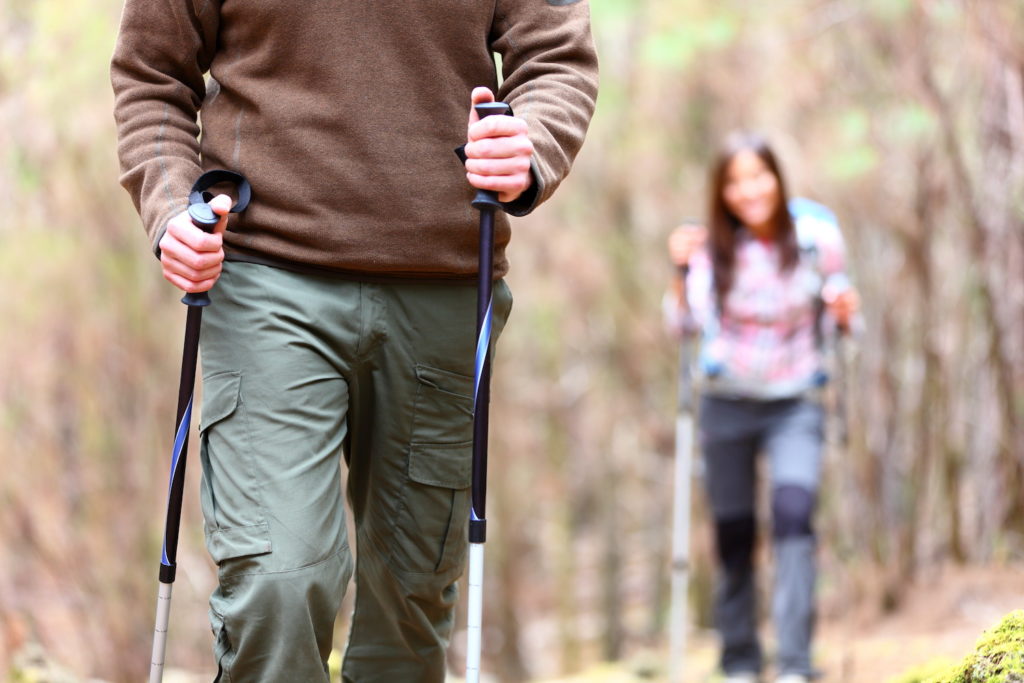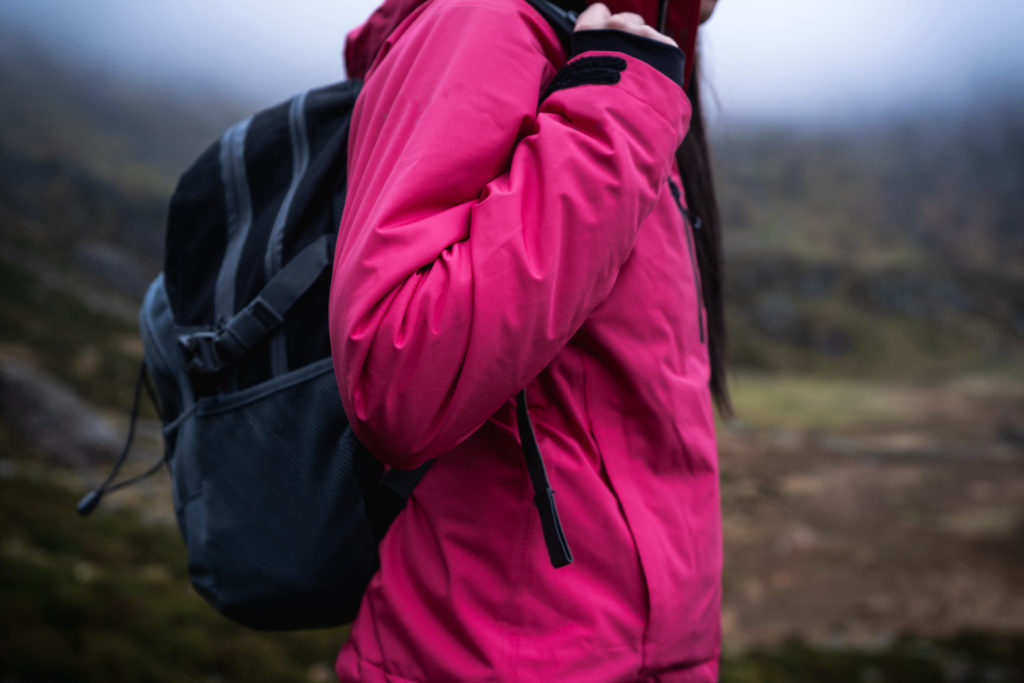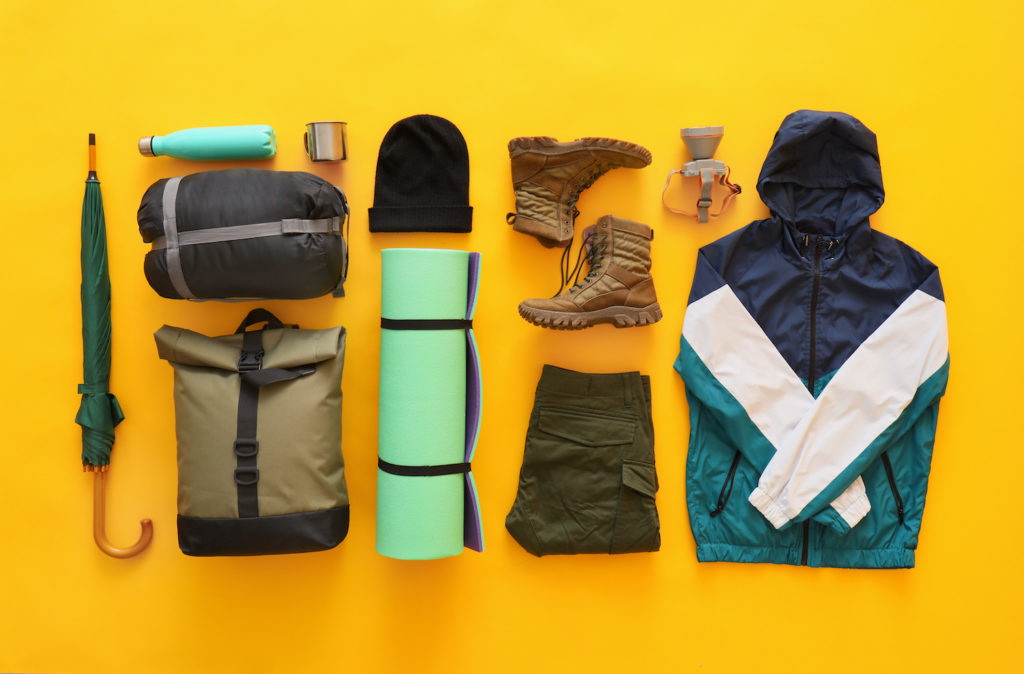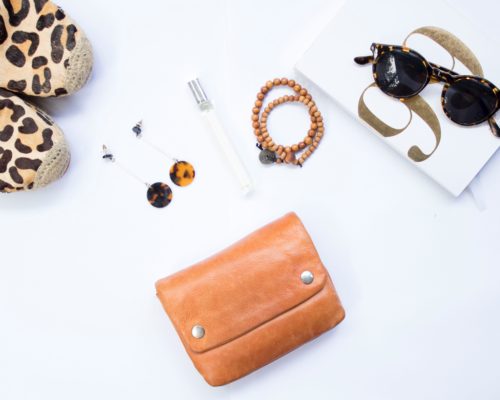“How strange that Nature does not knock, and yet does not intrude!” – Emily Dickinson
There’s nothing greater than getting some beautiful fresh air outdoors. Going for a hike can get the heart rate up, work all body muscles, and offer gorgeous views of nature.
Besides managing blood glucose levels, physical exercise is another essential part of diabetes management. While some people with diabetes may fear being away from home for too long or doing an exercise that’s too strenuous, there are some ways to make a hiking day trip incredibly diabetes-friendly. A hike can be the perfect low-impact exercise. But first, you’ll need some gear.

Table of Contents
Breathable Hiking Pants (With Pockets)
Your hiking outfit should be comfortable, accessible, breathable, and weather-appropriate. You’re going to want to dress in layers if you’re between seasons—think a light jacket, t-shirt, or tank top underneath, and some leggings or breathable pants. Tear-away pants are beneficial for a day that starts cool but warms up as the hike goes on.
For people with diabetes, having clothes with plenty of pockets that aren’t too tight is ideal. This is because you can carry any diabetes supplies you need, like your glucose meter or snacks. Here are some of our favorite hiking pants to craft your own hiking outfit:
- The North Face has excellent hiking pants that are as high quality as they are stylish. They’re also an excellent resource for shirts, jackets, backs, and hiking boots. For women, these pocketed pants are so perfect for a beautiful hike. And we love a good convertible pant for when that sunshine finally peeks out.
- Columbia Sportswear has some of the most affordable hiking gear (and outdoor gear, in general). They even have pants with UV protection to keep your skin safe from the sun’s rays.
- REI is a great spot to pick up a wide array of hiking-specific gear and pants. Their REI Co-Op brand, specifically, serves up some of the most comfortable hiking and trekking pants you can find.
Comfortable Shoes
Foot health is essential. Diabetic neuropathy can cause loss of feeling in your feet, making it hard to feel and identify problems like blisters, cuts, and ulcers, which can lead to serious complications if not treated. Finding the best shoe for you is vital for health, and starting with a proper shoe fitting will help you put the right foot forward.
Like backpacks, this is very much up to the person and the hike. A casual, paved trail walk or hike, a pair of well broken-in tennis shoes might be the perfect pair for you. A hiking boot will offer you good ankle support to avoid injuries on uneven trails, while a hiking shoe might offer you more flexibility. Take the time to find the best option for you.
A Lightweight, Waterproof Jacket
When you’re on a hike in the early morning, it can be pretty chilly. But by noon, the temperature can rise enough to make you wish you hadn’t worn a jacket. That’s why a rain jacket or a lightweight, waterproof jacket does the trick.
When you’re looking to bring along diabetes supplies on your hiking day trip, make sure your jacket has plenty of pockets. Some great options are:
- Arc’teryx Windshell Hoodie
- Smartwool PhD Ultra Light Sport Jacket
- The North Face Flight FutureLight Jacket (men’s)
- The North Face Triclimate Jacket (women’s)
A Waterproof Backpack or Fanny Pack
Backpacks are one of the truly most customizable pieces of gear. If you’re not going for a long hike, you may choose something as simple as a drawstring backpack or an old school bag lying around the house. If you’re going for a longer, more involved journey, you’ll need something that holds up to the rigors and holds all of your gear.
Weight, features, and size are all crucial factors in choosing the best backpack for you, but making sure that it suits your needs as someone with diabetes is important.
Make sure your backpack can accommodate a waterproof insulated container with some cold packs if you’re bringing insulin with you. A waterproof bag is also helpful for carrying your testing supplies, emergency supplies, and any other first aid essentials in case of an emergency.
Easy-to-Carry Water Bottle
The last thing you want is to forget your water on a hike or bring just enough for a couple of sips. Now, staying hydrated is one of the critical successes in health for everyone, especially folks with diabetes. Luckily for you, we wrote a whole article on the best water bottles and other sipping gear.
Another thing to keep in mind is how much water you should bring. Adventure gear company REI published a great guide on how much to bring, replenishing your electrolytes, and how to rehydrate after a hike.
- This classic 1L Nalgene water bottle will likely last you a 2-hour hike in moderate weather. And it comes with an easy-to-carry handle on the side—you’ll forget you even have it!
- If you want something that will keep your water cold, try a vacuum-sealed Hydro Flask. They can keep ice water cold for 24 hours! They go up to 100+ oz. but we think something around 24 would work.
- A Camelbak Hydration Pack is the easiest and best way to carry water on a hike. It’s more ideal for longer hikes but can be just as useful for a quick stroll through a local park, too.
Diabetes-Friendly Snacks
Keeping your energy levels and blood sugar numbers up while on the trail is essential. To avoid an emergency, make sure to keep a proper snack in your backpack. Something high in protein, with balanced carbs, is a classic choice for a person on the go. Some compact snack ideas include:
- Hard-boiled eggs (get a cute egg container to toss in your hiking bag)
- Almonds
- Beef sticks
- Roasted chickpeas
- Cheese and crackers
- Tuna packs
- Protein bars
- Celery and peanut butter
No matter what snacks you decide to bring, they should be compact, in reusable containers (to avoid carrying around garbage), and can be kept in your backpack for hours at a time.
Don’t bring anything that could go bad like yogurt or salad. And for things like peanut butter or tuna, you can get pre-packaged packs that make it easy to bring along.
And lastly, make sure you eat and drink enough before you head out to avoid any issues with your blood sugar. You want to enjoy your hike!
More Tips on Treating Diabetes On-The-Go
Pops Diabetes is your resource for all things having to do with treating, managing, and thriving with diabetes. Our blog is a great spot to check out trends and stats for diabetes to learn and try while managing their blood sugar.
And don’t forget to see how our virtual coach, Mina, can help work with you and your Rebel Glucose Meter for seamless management of your diabetes. For more information on how you can take control of your diabetes, give us a call!











